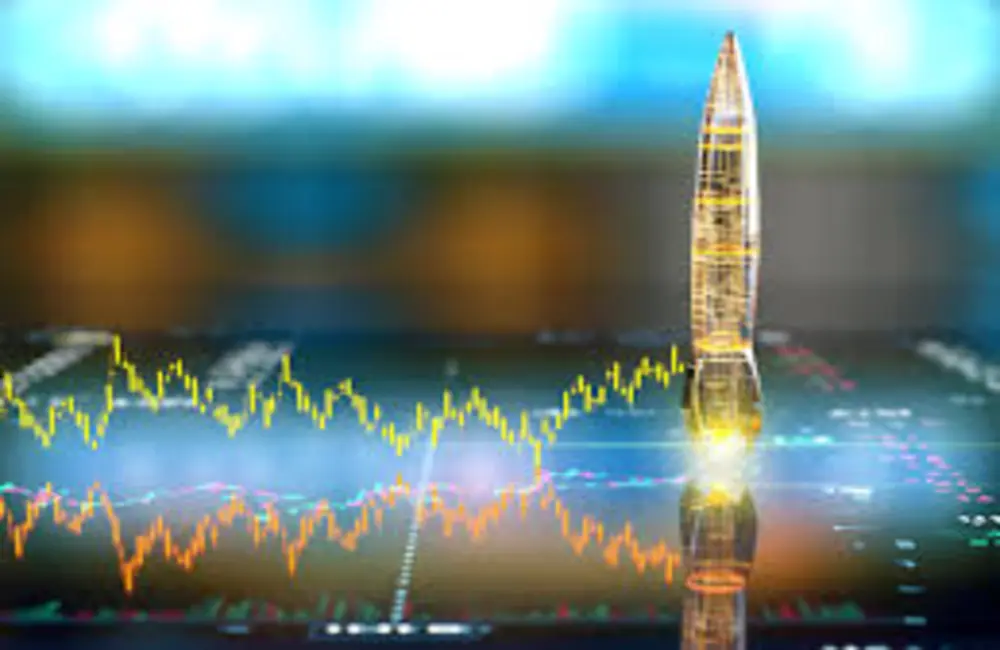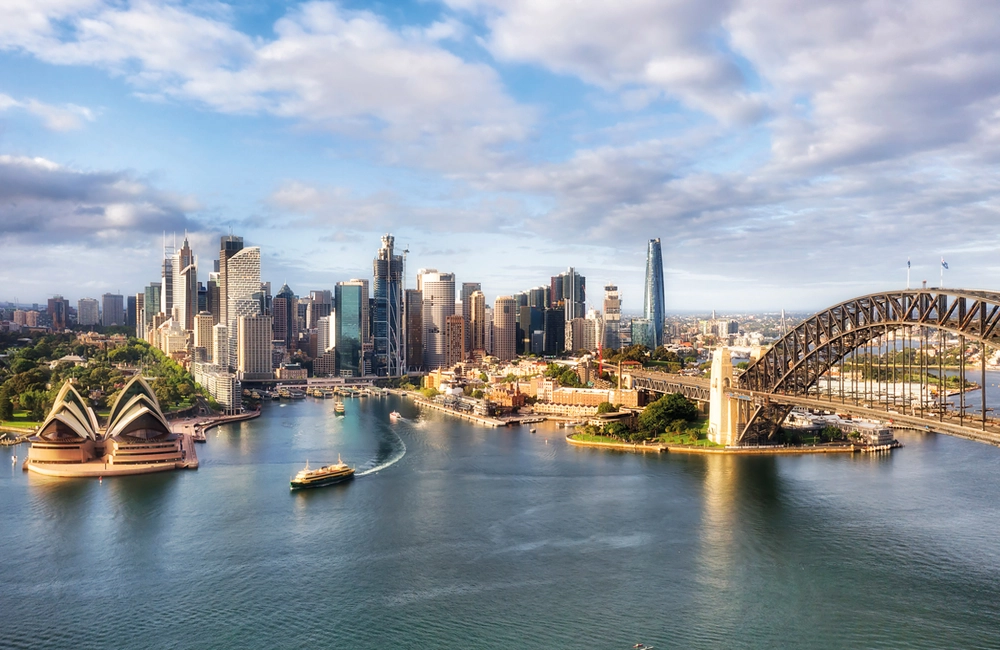ASX futures were 71 points or 1.03% higher at 6951 at 7am AEDT on Thursday, suggesting a positive start to trading. The Nasdaq Composite is now in a new bull market.
The technology-heavy index, which jumped 2.9% Wednesday, is up more than 20% from its mid-June low. It rose alongside other major indexes after a weaker-than-forecast reading on inflation gave investors hope that the Federal Reserve might soon slow the decades long campaign of rate increases. The S&P 500 gained 2.1 percent and the Dow Jones Industrial Average jumped 1.6 percent, or 535 points.
They lifted Brent crude oil 0.8% to $US97.07 a barrel, gold dipped 0.2 per cent to US$1,791.04.
In the local bond markets, the yield on Australian 2 Year government bonds increased by 2.75% and 10 Year government bonds was up at 3.24%. Yields abroad, the yield on 2 Year US Treasury notes was at 3.22%, and the yield on 10 Year US Treasuries dipped to 2.78%.
The Australian dollar bought 70.76 US cents compared with the previous close of 69.63. The Wall Street Journal Dollar Index, which measures the U.S. currency against 16 others, slipped to 97.08.
Asia
Chinese shares closed lower, as losses in the liquor makers and coal miners offset higher energy shares. The Shanghai Composite Index fell 0.5% to 3230.02, ending a four session winning streak, after figures showed China’s consumer inflation climbed 2.7% — the fastest in two years. Investor sentiment may have dampened on the news of Covid-19 outbreak in Hainan, weak view on China economic growth and U.S.-China tensions, Capital Securities says in a note. Kweichow Moutai, an index heavyweight, dropped 1.8% and Wuliangye Yibin lost 1.7%, while China Coal Energy slid 1.8% and China Shenhua Energy fell 0.5%. Hengli Petrochemical rose 3.0%, one of the biggest gainers on the day, and PetroChina advanced 0.6%. The Shenzhen Composite Index fell 0.4 percent, and the ChiNext Price Index was 1.3 percent lower at the close.
Hong Kong’s Hang Seng Index finished down 2.0% at 19610.84, led lower by a selloff in auto and tech stocks. The numbers reflected pressure on sentiment from data that showed China’s consumer inflation ramping up to its fastest pace in two years. Auto stocks led losses. XPeng was down 5.4%, Li Auto dropped 4.9% and BYD Co. declined 3.5%. Among tech stocks, JD.com fell 4.5 percent, Meituan dropped 3.6 percent and Alibaba Group fell 1.8 percent. Wharf Holdings was down 2.7% after it said its operations during the first half were hit materially by Covid-19 in Hong Kong and mainland China. Cathay Pacific added 0.9% following a narrower 1H net loss.
Japan’s Nikkei Stock Average lost 0.65% to end at 27819.33 on Tuesday, as most regional stock markets fell on the day. Attention today will centre on the headline number with markets preparing for a potential big move one way or the other in the event of a miss either side of the headline number today, says CMC Markets’ chief market analyst Michael Hewson in an email. Among the leaders of the Nikkei’s losses were electronics-related companies; Fujitsu fell 3.8%, Renesas Electronics dropped 3.7%, and Advantest shed 3.6%. The dollar was at 134.98, versus 135.00 in late trade Tuesday in Tokyo. Tokyo’s 10-year Japanese government bond yield is 3bps higher at 0.190%.
Europe
Stocks in Europe rose as traders weigh company earnings and economic data. The pan-European Stoxx Europe 600 rose 0.9 percent, the German DAX gained 1.23 percent and the French CAC 40 added 0.5 percent.
The FTSE 100 in London rose 0.3 percent on Wednesday as markets parsed down inflation in the U.S., though gas-price fears still ripple through Europe.
“Whilst we have seen the upside across European indices, the FTSE 100 has lagged, with a reversal in GBP/USD serving to hold back an index which is around two-thirds comprised of foreign currency denominating revenues,” says Joshua Mahony, senior market analyst at online trading platform IG.
Admiral Group topped the risers, closing the day up 13% after reporting its first-half profit was around 19% higher than pre-pandemic levels. Close behind was Aviva, which closed up 12% after it said operating profit had risen for the first six months of the year and announced a buyback programme.
North America
Stocks have surged over the past month, after recording one of their worst first-half performances in decades, reflecting a popular bet on Wall Street that retreat on the inflation front will allow the central bank to be more accommodating to the markets.
The Nasdaq is still 18 percent lower this year and it was 32 percent lower at its low water mark on June 16. The recent increase marked the end of its longest bear market since 2008.
Consumer price index data released on Wednesday showed that, in July, inflation had eased slightly to an annual rate of 8.5%. That is still near a four-decade high, but at this point even a modest easing is more than good enough for the market to build gains on, particularly after fears that a stronger number would have forced the Fed to be more aggressive. The rise in interest rates prices money more expensively, a development that undercuts stocks trading at high prices relative to company profits.
“It’s early days, but the initial read here is that this is an indication that inflation might finally be starting to move into at least some of the areas we would all like to see it moving,” said Jake Jolly, senior investment strategist at BNY Mellon Investment Management. “We’re still a long way from being near out of the woods here.”
The biggest gainers Wednesday included tourism and travel companies that have been battered by the uncertainty of the pandemic recovery. And on the S&P 500, Norwegian Cruise Line Holdings, Royal Caribbean and Carnival were some of the best-performing companies. Shares of financial companies also rallied, with card issuers Discover Financial Services, Capital One Financial and Synchrony Financial taking the lead.
























